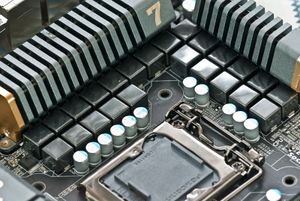Motherboard
Jump to navigation
Jump to search
This thing has a CPU in it. You can put cards like Ram and waifu cards.
Picking out a motherboard
A motherboard is crucial to the operation of a PC and picking out a suitable motherboard can save hassle and time. At every price point, a motherboard will have different features some of which are very useful.
Every brand is different and there is no one good brand, it all depends on pricing and features. There is no 'ideal' motherboard and most of the time, most choices are reasonable. Every generation have outstanding and dull boards.
Useful things to consider when purchasing a motherboard.
- The chipset the motherboard is on as this determines the features.
- The VRM (Voltage regulator module) - For more information see section on VRM.
- Troubleshooting features, this includes post LED and/or post codes. Very useful in troubleshooting, for high end chipsets such as Intel 'Z' series or AMD 'X' series post LEDs are strongly recommended as a minimum.
- Dual BIOS, very useful to prevent BIOS from bricking, some motherboards have socketed BIOS chips - Consult motherboard for more information.
- Memory compatibility and support, generally this can be found in the support section of the motherboard by consulting the QVL (Qualified Vendor List).
- Rear IO and connectivity, some motherboards have more rear USB slots and others may contain better audio solutions. Also important to consider M.2 slots and SATA ports, boards vary from 1-3 M.2 slots where one can be M.2 WiFi.
- Ability to base-clock overclock (BCLK OC). This feature is generally found on top end boards and is useful for people wanting to extract every last but of performance from memory and CPU.
- RGB solutions - who doesn't love some RGB.
Motherboard VRM
| ||||||
